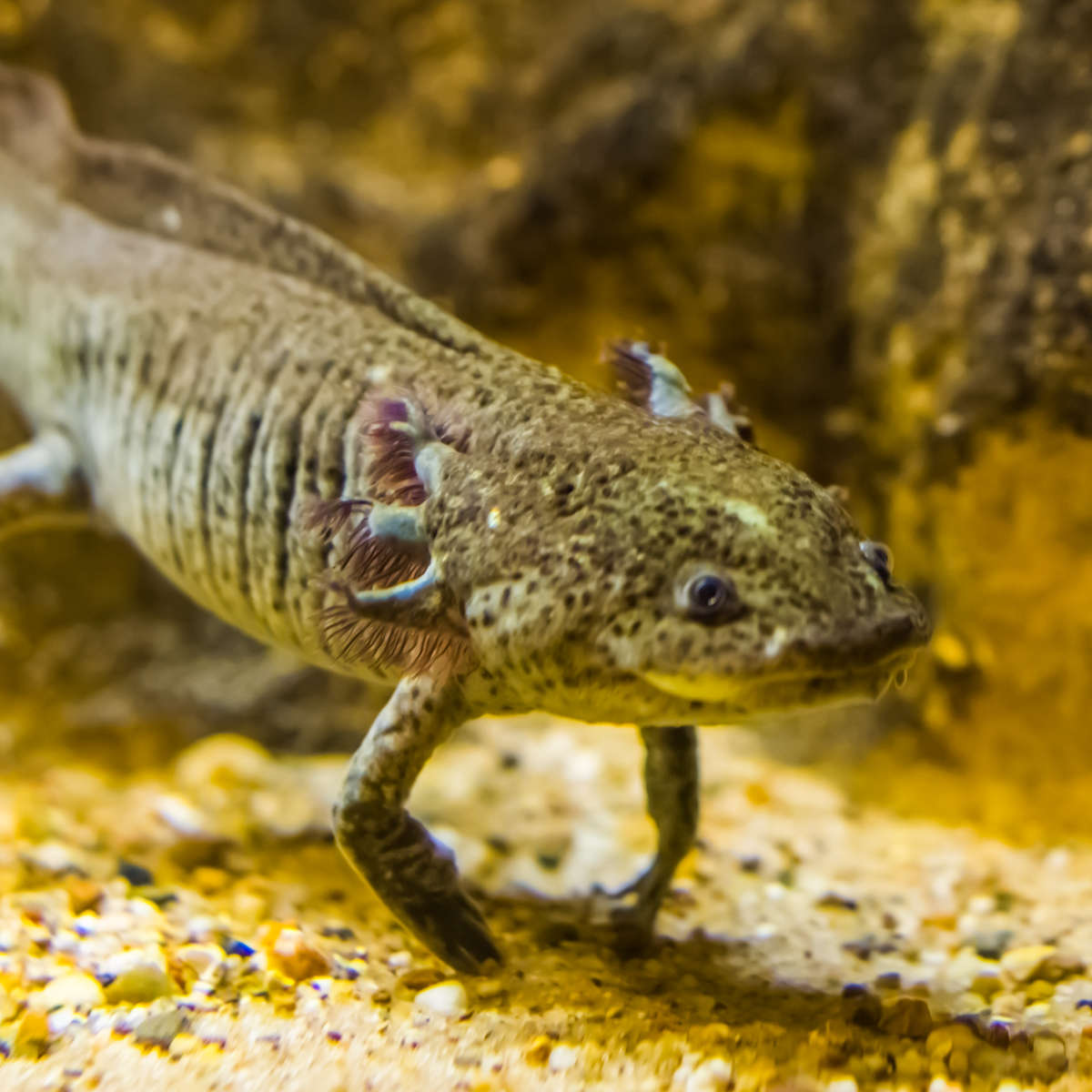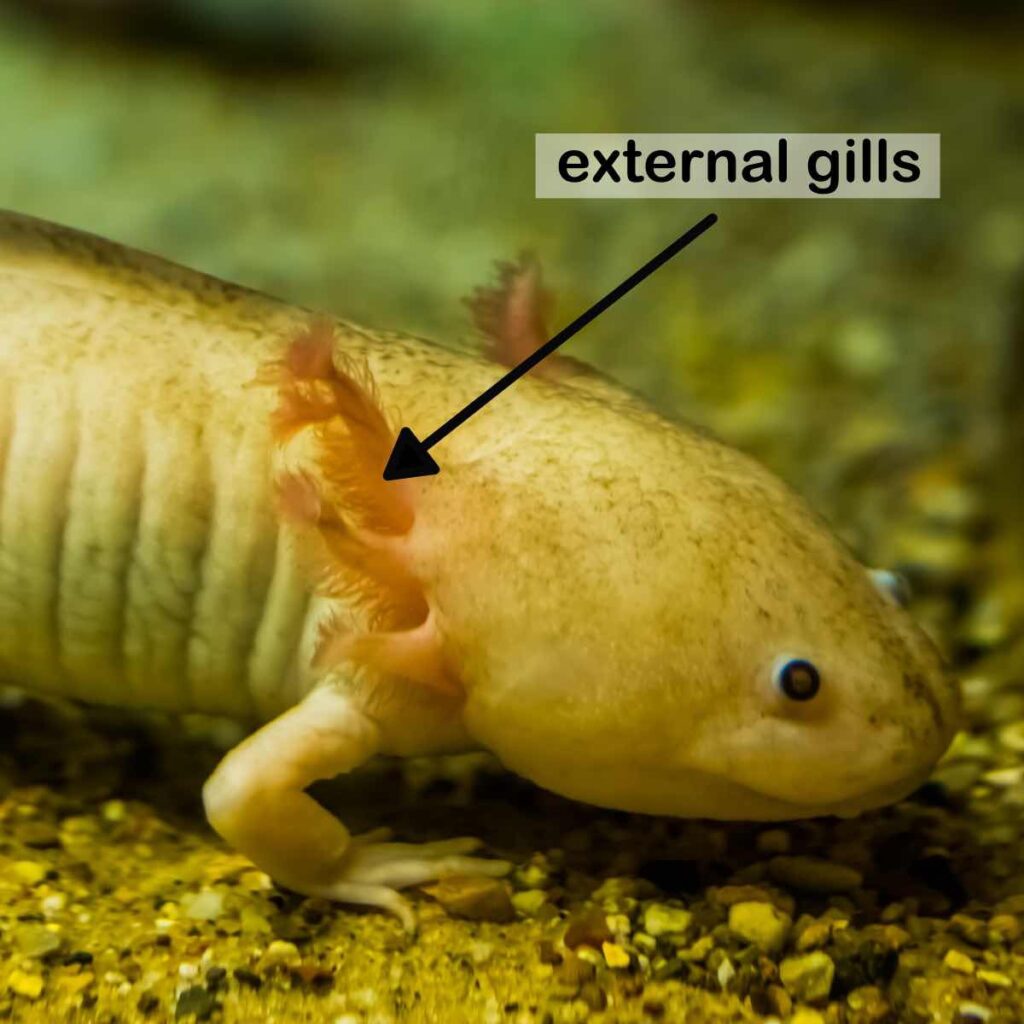Last Reviewed and Updated on February 19, 2023
Axolotls are a type of salamander that is famous for its unique looks. Native to the lakes and canals of Mexico City and a popular pet worldwide, these aquatic creatures have captivated scientists and animal lovers for ages. One of the most intriguing features of axolotls is their respiratory system, which raises the question: do axolotls have gills? Let’s find out.

Also read: fun facts about axolotls.
Do axolotls have gills?
The answer is yes. They are aquatic salamanders and use their gills to extract oxygen from the water. Axolotls are neotenic, which means they retain their juvenile form into adulthood, and their gills are a key feature of their juvenile morphology (as is the case with the larval form of most salamanders). While some axolotls can undergo metamorphosis and develop lungs for breathing air, most individuals remain in their aquatic form and rely primarily on their gills for breathing.
However, unlike most animals with gills (fish…), axolotls have external gills that are exposed to the environment instead of internal ones inside the pharynx. External gills in axolotl are set on frills of stalks (feather-looking) protruding from both sides of their head.

Why do Axolotls Have External Gills?
The most important reason is that axolotls are aquatic creatures that breathe through gills like fish. Their external gills are their primary source of oxygen. Gills are respiratory organs that extract oxygen from the water and expel carbon dioxide. While many aquatic animals have internal gills, axolotls are one of the animals that have evolved to have external gills. Unlike most other amphibians, most axolotls remain in water throughout their lives.
It isn’t known when the first animals that have external gills evolved (source The external gills of Palaeozoic amphibians by F. Witzmann). What is known is that the size, or to be exact, the surface area of the external gills depends on the environment; the more oxygen-rich the water, the smaller the gills are (source Watter balance and gas exchange by L. J. Vitt, J. P. Caldwell).
Do Terrestrial Axolotls Have Gills?
While extremely rare, especially in nature, sometimes an axolotl can undergo a metamorphosis and transitions to a terrestrial (land) salamander. When this happens, the axolotls’ gills start degenerating, and their lungs become more efficient and fully developed. Once the metamorphosis is complete, the terrestrial axolotl will breathe through its lungs and won’t be able to breathe underwater anymore.
You can see the documented and photographed metamorphosis of an axolotl named Gollum here. His owner photographed the changes daily, so you can clearly see how the gills shrieked over the course of a few days (as well as other changes in his appearance).

Axolotls are genuinely unique in the animal kingdom, which is why they made it into our list of the strangest animals out there. Be sure to explore the other 99! We are sure you haven’t seen many of these (and some truly are otherworldly).
